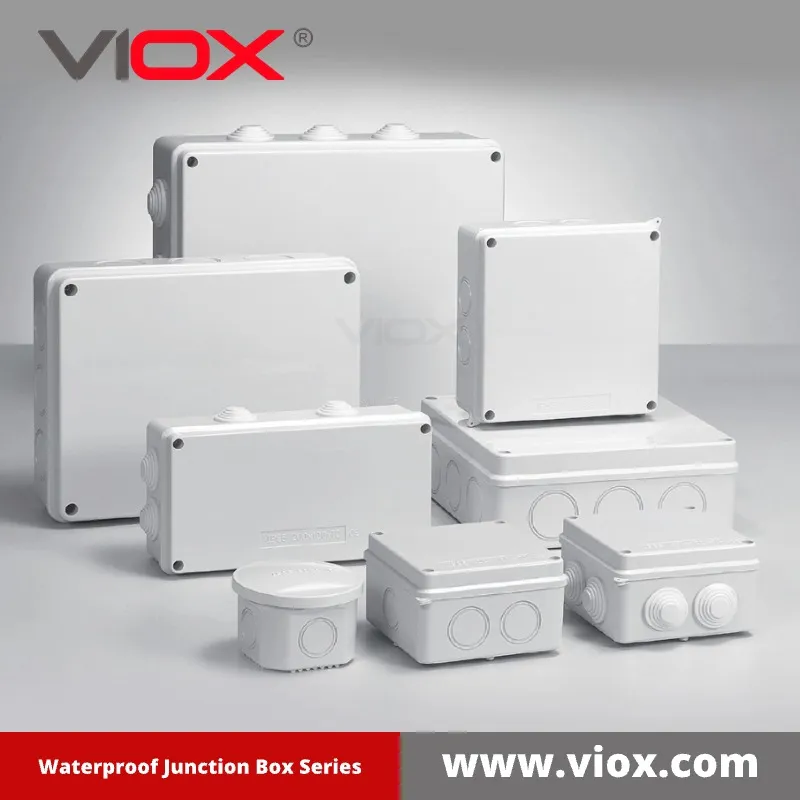Understanding junction box accessibility requirements is essential for safe electrical installations, code compliance, and avoiding costly repairs. Whether you’re a homeowner planning renovations or a professional electrician, this guide provides everything you need to know about proper junction box placement and access requirements.
What Are Junction Boxes and Why Accessibility Matters
A koblingsboks is an electrical enclosure that contains wire connections, splices, or electrical devices. These boxes serve as critical safety components by:
- Containing electrical arcs and sparks
- Protecting wire connections from physical damage
- Preventing electrical fires from spreading
- Providing organized access points for electrical systems
Why Junction Boxes Must Remain Accessible:
The NEC mandates accessibility because electrical connections can fail over time, requiring inspection, maintenance, or repair. Hidden junction boxes create dangerous situations where:
- Faulty connections can’t be quickly identified
- Emergency shutoffs become impossible
- Fire hazards remain undetected
- Electrical troubleshooting becomes extremely difficult
NEC Code Requirements for Junction Box Accessibility
Article 314.29: Junction Box Access Requirements
The National Electrical Code clearly states in Article 314.29 that junction boxes must be accessible. Here’s what this means:
“Accessible” Definition According to NEC:
- Admitting close approach
- Not permanently closed in by building structure
- Not requiring removal of panels, doors, or similar building elements
- Easily reached for inspection and maintenance
Key Code Compliance Points
| Krav | Code Section | Practical Application |
|---|---|---|
| Must be accessible | 314.29 | No drywall covering allowed |
| Behind removable panels | 314.29 Exception | Cabinet or fixture panels only |
| Proper marking/labeling | 110.22 | Clear identification required |
| Working space clearance | 110.26 | 30-inch minimum access space |
| Equipment grounding | 250.148 | Proper grounding continuity |
⚠️ Sikkerhetsadvarsel: Covering junction boxes with drywall violates electrical codes and creates serious fire and electrocution hazards. Always consult a licensed electrician for electrical work.
What Makes a Junction Box “Accessible” vs “Hidden”
Understanding the difference between accessible and hidden installations is crucial for code compliance:
Accessible Installation Requirements
Proper Access Methods:
- Surface-mounted boxes on finished walls
- Recessed boxes with removable cover plates
- Boxes behind removable panels (cabinet doors, access panels)
- Ceiling-mounted boxes with drop-down access
- Basement or crawl space installations with clear pathways
Prohibited Hidden Installations
Code Violations Include:
- Junction boxes drywalled over completely
- Boxes behind permanently fixed walls
- Installations requiring structural demolition for access
- Boxes covered by flooring or ceiling materials
- Hidden splices without proper junction box enclosure
Comparison: Accessible vs Hidden Junction Box Installations
| Aspekt | Accessible Installation | Hidden Installation |
|---|---|---|
| Overholdelse av lover og regler | ✅ NEC Compliant | ❌ Code Violation |
| Sikkerhetsnivå | ✅ High – Easy inspection | ❌ Dangerous – No access |
| Vedlikehold | ✅ Simple repairs/updates | ❌ Requires demolition |
| Brannsikkerhet | ✅ Quick problem identification | ❌ Hidden fire hazards |
| Insurance Coverage | ✅ Full coverage | ❌ May void claims |
| Resale Value | ✅ Increases home value | ❌ Reduces marketability |
| Inspection Compliance | ✅ Passes electrical inspections | ❌ Fails inspections |
| Profesjonell installasjon | ✅ Meets electrician standards | ❌ Requires correction |
Proper Junction Box Placement Solutions
Option 1: Surface-Mounted Installations
Best For: Finished basements, utility rooms, commercial spaces
Installasjonsprosess:
- Mount junction box directly to wall surface
- Install appropriate cover plate
- Ensure 30-inch working clearance
- Label box contents clearly
- Maintain proper conductor lengths
Option 2: Recessed Behind Access Panels
Best For: Living spaces requiring aesthetic considerations
Requirements:
- Removable access panels only
- No tools required for panel removal
- Clear marking of electrical access
- Panels must open to full box access
- Cannot be permanent cabinet installations
Option 3: Basement or Crawl Space Mounting
Best For: New construction and major renovations
Kodekrav:
- Adequate headroom (minimum 6 feet where possible)
- Safe access pathway
- Proper lighting for inspection
- Protection from physical damage
- Appropriate environmental rating
Step-by-Step Guide: Making Hidden Junction Boxes Code-Compliant
Step 1: Locate All Hidden Boxes
- Turn off power at the main breaker
- Use a stud finder with electrical detection
- Check for warm spots on walls (may indicate hidden connections)
- Trace wire paths from panels and fixtures
- Document locations with photos and measurements
Step 2: Create Proper Access
- Mark box locations accurately
- Cut drywall to expose box completely
- Install appropriate junction box if missing
- Ensure proper wire connections and secure splices
- Verify adequate working space clearances
Step 3: Install Access Solutions
- Option A: Install removable access panel
- Option B: Relocate box to accessible location
- Option C: Replace with surface-mounted installation
- Ensure all connections meet current code requirements
- Test electrical continuity and proper grounding
Step 4: Final Inspection and Documentation
- Schedule electrical inspection if required
- Update electrical panel directory
- Photograph final installation for records
- Ensure all access points are clearly marked
- Provide documentation to homeowner
💡 Eksperttips: When relocating junction boxes, always use appropriately sized conductors and maintain proper splice techniques. Oversized boxes provide better accessibility and future expansion capabilities.
Common Junction Box Access Violations and Solutions
Violation 1: Boxes Covered by Drywall
Problem: Complete concealment behind finished walls
Løsning: Cut access opening and install removable panel
Cost Impact: $150-$300 per box correction
Violation 2: Inadequate Working Space
Problem: Less than 30-inch clearance for access
Løsning: Relocate box or remove obstructions
Code Reference: NEC 110.26
Violation 3: Unmarked Access Panels
Problem: Hidden panels without electrical identification
Løsning: Install proper electrical warning labels
Requirement: NEC 110.22 identification standards
Violation 4: Tool-Required Access
Problem: Panels requiring screwdrivers or special tools
Løsning: Install finger-pull or quarter-turn fasteners
Standard: Quick access without tools
Sikkerhetshensyn og faglige anbefalinger
Critical Safety Points
⚠️ Fire Hazard Prevention:
- All wire splices must occur inside approved junction boxes
- Proper conductor sizing prevents overheating
- Ground fault protection where required by code
- Regular inspection schedules for older installations
⚠️ Electrocution Prevention:
- Always turn off power before electrical work
- Test circuits with approved voltage testers
- Maintain proper grounding continuity
- Use appropriate personal protective equipment
Når du bør ringe en profesjonell
Require Licensed Electrician:
- Moving junction boxes to new locations
- Upgrading electrical panels or circuits
- Installing new branch circuits
- Working with 240-volt circuits
- Any work requiring electrical permits
Professional Benefits:
- Code compliance guarantee
- Proper permit acquisition
- Insurance liability coverage
- warranty on electrical work
- Expert safety protocols
Cost Analysis: Junction Box Access Solutions
| Løsningstype | Material Cost | Labor Cost | Total investering | Tidslinje |
|---|---|---|---|---|
| Access Panel Installation | $25-$50 | $100-$200 | $125-$250 | 1–2 timer |
| Surface Mount Conversion | $40-$80 | $150-$300 | $190-$380 | 2–3 timer |
| Box Relocation | $60-$120 | $200-$400 | $260-$520 | 3–4 timer |
| New Circuit Installation | $150-$300 | $300-$600 | $450-$900 | 4–6 timer |
💡 Cost-Saving Tip: Address multiple junction box violations during single service call to reduce labor costs. Many electricians offer package pricing for multiple box corrections.
Quick Reference: Junction Box Access Checklist
Sjekkliste før installasjon
- Verify electrical code requirements
- Plan accessible locations only
- Ensure adequate working clearances
- Select appropriate box sizes
- Confirm proper environmental ratings
Post-Installation Verification
- All boxes easily accessible
- Proper cover plates installed
- Clear identification labeling
- Verifisering av samsvar med koden
- Electrical inspection scheduled
Vedlikeholdsplan
- Annual visual inspection
- Se etter løse forbindelser
- Verify cover plate security
- Test GFCI protection where applicable
- Update electrical documentation
Ofte stilte spørsmål
Can I install a junction box behind a removable panel?
Yes, junction boxes can be installed behind removable panels as long as the panel doesn’t require tools for removal and provides complete access to the box. The panel must be clearly marked as electrical access.
What happens if I drywall over a junction box?
Covering junction boxes with drywall violates electrical codes, creates fire hazards, and can void homeowner’s insurance. You must create proper access or relocate the box to an accessible location.
How much clearance is required around junction boxes?
The NEC requires minimum 30-inch clearance in front of electrical equipment for safe access and maintenance. Side clearances depend on the specific installation requirements.
Can junction boxes be in walls between rooms?
Junction boxes can be installed in interior walls if they remain accessible from at least one side. Both sides don’t need access, but complete concealment is prohibited.
What’s the difference between junction boxes and outlet boxes?
Junction boxes contain only wire splices and connections, while outlet boxes house receptacles, switches, or fixtures. Both must remain accessible, but outlet boxes naturally provide access through their devices.
Do all wire splices need junction boxes?
Yes, all wire splices must be contained in approved electrical boxes. Direct splices in walls, attics, or other concealed spaces without proper enclosures violate electrical codes.
How do I find hidden junction boxes in my home?
Use electrical circuit tracers, thermal imaging, or hire an electrician with professional detection equipment. Check areas where multiple circuits might converge, such as room corners or ceiling fixtures.
Can I use a cabinet as access for junction boxes?
Removable cabinet panels can provide junction box access, but permanent cabinet installations don’t qualify. The access must be easily removable without tools and clearly marked.
Ekspertanbefalinger og beste praksis
Professional Installation Standards
Industry Best Practices:
- Oversized boxes provide better access and future expansion
- Consistent labeling systems improve maintenance efficiency
- Strategic placement considers both access and aesthetics
- Quality materials ensure long-term reliability and safety
- Proper documentation assists future electrical work
Future-Proofing Strategies
Smart Installation Planning:
- Install extra junction boxes during construction
- Use larger boxes to accommodate future circuits
- Plan accessible routes for electrical upgrades
- Consider smart home wiring requirements
- Maintain detailed electrical drawings
💡 Eksperttips: Always photograph electrical installations before closing walls. This documentation proves invaluable for future modifications and troubleshooting.
Conclusion: Ensuring Safe and Code-Compliant Junction Box Installations
Junction boxes must never be hidden behind drywall or other permanent building materials. The NEC’s accessibility requirements exist to protect lives and property by ensuring electrical connections remain inspectable and serviceable. Whether you’re dealing with existing violations or planning new installations, always prioritize safety and code compliance.
For complex electrical work or code compliance questions, consult with a licensed electrician who can ensure your installation meets all local and national electrical standards. Proper junction box accessibility is an investment in your home’s safety, value, and electrical system reliability.
Take Action: If you suspect hidden junction boxes in your home, schedule a professional electrical inspection to ensure code compliance and safety. Don’t compromise on electrical safety—the risks are simply too great.
Relatert
Komplett guide til symboler for sikringsbrytere




